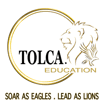Podcast
Questions and Answers
What is one of the key factors influencing employee motivation in their tenth year of employment?
What is one of the key factors influencing employee motivation in their tenth year of employment?
- Less need for recognition
- Higher initial salary
- Decreased responsibilities
- Increased work-life balance needs (correct)
Employees in their tenth year often do not seek recognition for their work.
Employees in their tenth year often do not seek recognition for their work.
False (B)
Name one strategy that can enhance motivation for employees in their tenth year.
Name one strategy that can enhance motivation for employees in their tenth year.
Regular performance reviews
After a decade, employees may feel __________ in their current positions.
After a decade, employees may feel __________ in their current positions.
Match the factors influencing employee motivation in year 10 with their descriptions:
Match the factors influencing employee motivation in year 10 with their descriptions:
Which aspect of organizational culture is particularly important for employee motivation in year 10?
Which aspect of organizational culture is particularly important for employee motivation in year 10?
Ten years into employment, employees are less aware of how their work aligns with company values.
Ten years into employment, employees are less aware of how their work aligns with company values.
What is a primary benefit of mentorship and coaching programs?
What is a primary benefit of mentorship and coaching programs?
What do employees often expect after ten years of service regarding compensation?
What do employees often expect after ten years of service regarding compensation?
Flexible work arrangements are not important for employee retention.
Flexible work arrangements are not important for employee retention.
Employees may view their leadership as a ___________ factor that can affect their motivation.
Employees may view their leadership as a ___________ factor that can affect their motivation.
What is a common consequence of a lack of career advancement opportunities for employees in their tenth year?
What is a common consequence of a lack of career advancement opportunities for employees in their tenth year?
What should organizations evaluate over time to remain competitive?
What should organizations evaluate over time to remain competitive?
Establishing clear, transparent mechanisms for acknowledging employees' contributions is part of a __________ program.
Establishing clear, transparent mechanisms for acknowledging employees' contributions is part of a __________ program.
Match the following employee engagement strategies with their descriptions:
Match the following employee engagement strategies with their descriptions:
What is a key component of promoting employee engagement?
What is a key component of promoting employee engagement?
Employees in their tenth year have the same needs as those in earlier stages.
Employees in their tenth year have the same needs as those in earlier stages.
Why is it important to understand the unique motivators of experienced employees?
Why is it important to understand the unique motivators of experienced employees?
Transparency in __________ mechanisms is necessary for recognizing employee contributions.
Transparency in __________ mechanisms is necessary for recognizing employee contributions.
Which of the following is NOT a suggested strategy for employee retention?
Which of the following is NOT a suggested strategy for employee retention?
Flashcards
Mentorship and Coaching Programs
Mentorship and Coaching Programs
Pairing experienced employees with newer colleagues or senior leaders to share knowledge and guide future growth.
Flexible Work Arrangements
Flexible Work Arrangements
Providing work arrangements that offer flexibility and better work-life balance to retain employees who prioritize personal needs.
Competitive Compensation and Benefits
Competitive Compensation and Benefits
Offering competitive salaries and benefits that are regularly reevaluated and adjusted based on market rates for comparable experience.
Rewards and Recognition Programs
Rewards and Recognition Programs
Signup and view all the flashcards
Improved Communication and Feedback
Improved Communication and Feedback
Signup and view all the flashcards
Employees' Specific Needs and Motivators
Employees' Specific Needs and Motivators
Signup and view all the flashcards
Understanding Employee Needs in Year 10
Understanding Employee Needs in Year 10
Signup and view all the flashcards
Strategies for Retaining Experienced Employees
Strategies for Retaining Experienced Employees
Signup and view all the flashcards
Maintaining Competitive Compensation
Maintaining Competitive Compensation
Signup and view all the flashcards
Opportunities for Growth and Development
Opportunities for Growth and Development
Signup and view all the flashcards
Year 10 Shift
Year 10 Shift
Signup and view all the flashcards
Growth and Development
Growth and Development
Signup and view all the flashcards
Recognition and Rewards
Recognition and Rewards
Signup and view all the flashcards
Work-Life Balance
Work-Life Balance
Signup and view all the flashcards
Compensation and Benefits
Compensation and Benefits
Signup and view all the flashcards
Leadership and Management
Leadership and Management
Signup and view all the flashcards
Organizational Culture
Organizational Culture
Signup and view all the flashcards
Purpose and Values
Purpose and Values
Signup and view all the flashcards
Lack of Advancement Opportunities
Lack of Advancement Opportunities
Signup and view all the flashcards
Regular Performance Reviews
Regular Performance Reviews
Signup and view all the flashcards
Study Notes
Introduction
- Employee motivation is a crucial factor in organizational success.
- Understanding and supporting employee motivation is especially important in the tenth year of employment.
- This period often reflects a shift in employee needs and expectations.
Factors Influencing Employee Motivation in Year 10
- Growth and Development: Employees in their tenth year may seek more challenging roles, greater autonomy, or opportunities for skill enhancement. They may feel stagnant in their current position.
- Recognition and Rewards: Years of contributions often deserve acknowledgement and formal appreciation. Employees might feel their contributions are not being adequately recognized.
- Work-Life Balance: Ten years in the workplace can often coincide with increased personal and family obligations. Employee preferences regarding work-life balance may change.
- Compensation and Benefits: After a decade of service, employees often expect competitive compensation and benefits packages aligned with their experience and contribution.
- Leadership and Management: Employees in year 10 may have an established view of their leadership which could influence morale. Poor leadership that was tolerated in earlier years may become a significant demotivator.
- Organizational Culture: A supportive and engaging organizational culture can significantly impact employee motivation at any point, but it is particularly important to cultivate employee loyalty over a 10-year career period.
- Purpose and Values: Employees in their tenth year may be more aware of how their work fits into the overall mission and vision of the organization, seeking alignment between their values and company values. A disconnect can negatively affect their motivation.
- Lack of Career Advancement Opportunities: Employees may feel undervalued or face reduced opportunities to advance within the organization after 10 years.
Strategies to Enhance Motivation in Year 10 Employees
- Regular Performance Reviews: Regular feedback sessions are important to address any concerns, recognize contributions, and identify future development opportunities.
- Personalized Development Plans: The plans should acknowledge the employee's past contributions, skill set, and aspirations for the future. Tailored training and development opportunities are crucial to demonstrate the company's investment in the employee's future.
- Mentorship and Coaching Programs: Pairing tenured employees with more junior colleagues or senior leaders can enhance knowledge transfer and provide guidance for future growth.
- Flexible Work Arrangements: Options that allow for better work-life balance can retain employees that are prioritizing personal needs. Flexibility is a crucial benefit to attract and retain talent.
- Competitive Compensation and Benefits: Compensation needs should be evaluated over time, not just initially; the benefit package should remain competitive with the current market rates for comparable experience.
- Rewards and Recognition Programs: Establishing clear, transparent mechanisms for acknowledging employees' contributions and exceeding expectations.
- Improved Communication and Feedback: Promoting open and honest communication channels that enable employee engagement and allow employees to provide candid feedback on their experience. This will foster a trusting company culture.
Conclusion
- Understanding the unique motivators of employees in their tenth year is important since employees in this stage likely have different needs than those in earlier stages.
- Organizations should actively engage in strategies to address these specific challenges to retain valuable, experienced personnel.
Studying That Suits You
Use AI to generate personalized quizzes and flashcards to suit your learning preferences.




